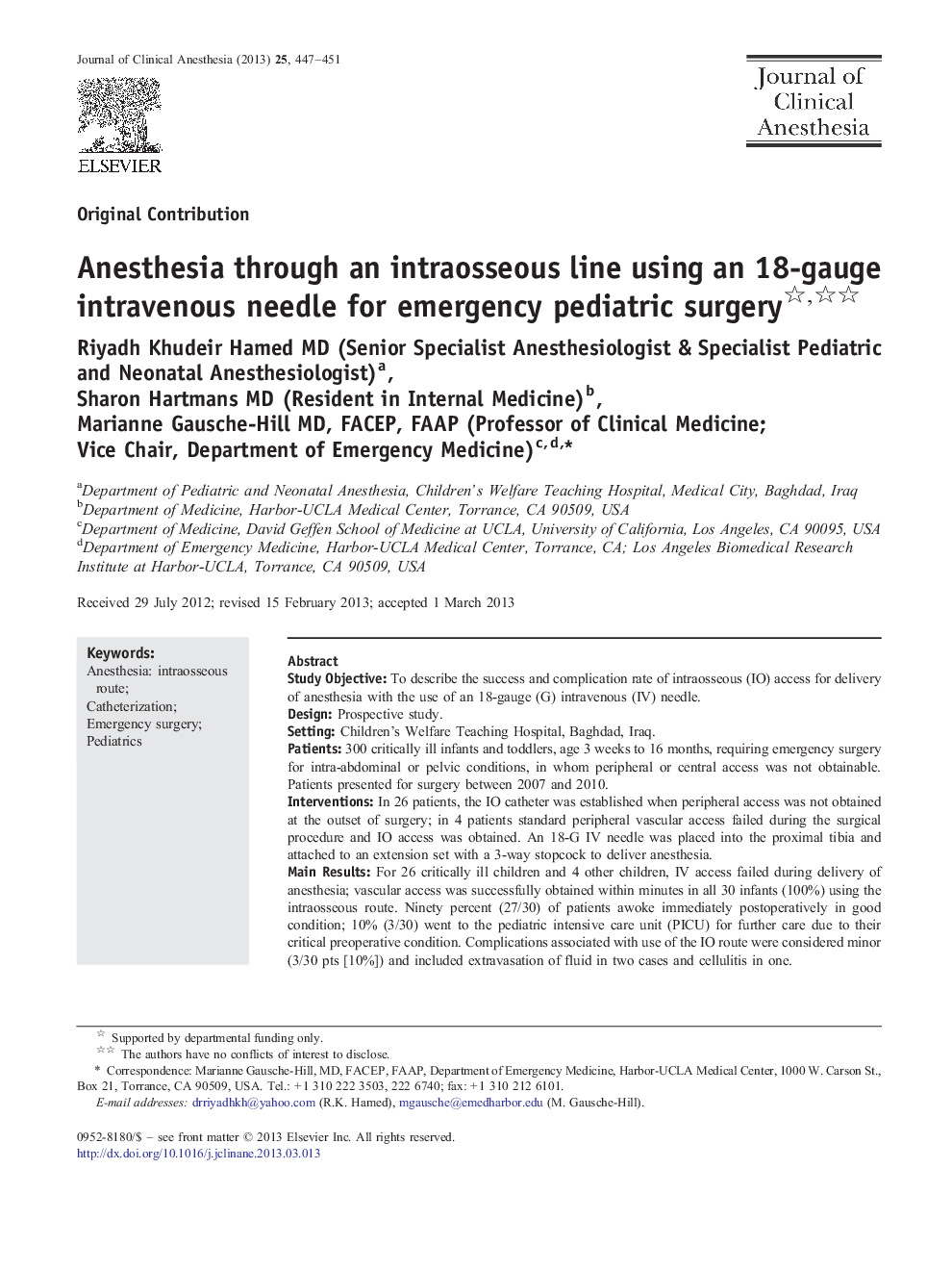| Article ID | Journal | Published Year | Pages | File Type |
|---|---|---|---|---|
| 2762746 | Journal of Clinical Anesthesia | 2013 | 5 Pages |
Study ObjectiveTo describe the success and complication rate of intraosseous (IO) access for delivery of anesthesia with the use of an 18-gauge (G) intravenous (IV) needle.DesignProspective study.SettingChildren’s Welfare Teaching Hospital, Baghdad, Iraq.Patients300 critically ill infants and toddlers, age 3 weeks to 16 months, requiring emergency surgery for intra-abdominal or pelvic conditions, in whom peripheral or central access was not obtainable. Patients presented for surgery between 2007 and 2010.InterventionsIn 26 patients, the IO catheter was established when peripheral access was not obtained at the outset of surgery; in 4 patients standard peripheral vascular access failed during the surgical procedure and IO access was obtained. An 18-G IV needle was placed into the proximal tibia and attached to an extension set with a 3-way stopcock to deliver anesthesia.Main ResultsFor 26 critically ill children and 4 other children, IV access failed during delivery of anesthesia; vascular access was successfully obtained within minutes in all 30 infants (100%) using the intraosseous route. Ninety percent (27/30) of patients awoke immediately postoperatively in good condition; 10% (3/30) went to the pediatric intensive care unit (PICU) for further care due to their critical preoperative condition. Complications associated with use of the IO route were considered minor (3/30 pts [10%]) and included extravasation of fluid in two cases and cellulitis in one.ConclusionThe IO route provided for rapid delivery of anesthesia, induction, and maintenance in this series of critically ill infants undergoing emergency surgery when other vascular access routes failed. Few complications were noted. Intraosseous access was achieved through a simple technique using an 18-gauge IV needle.
